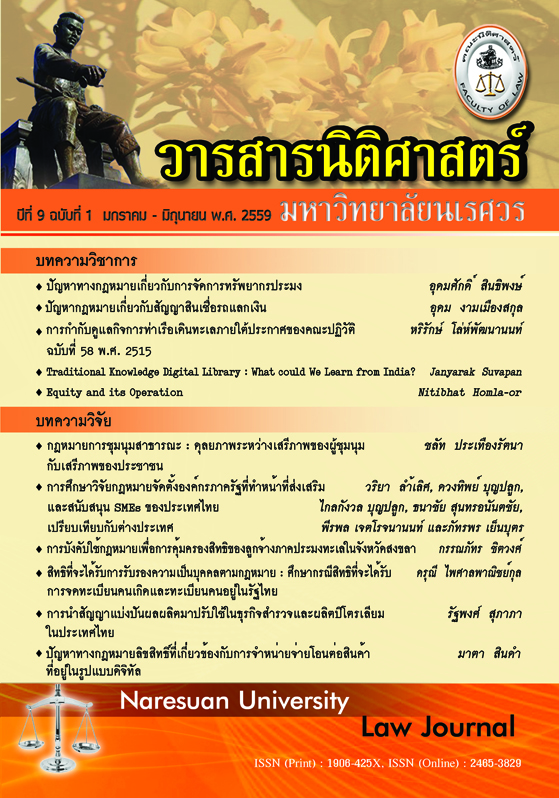Equity and its Operation
Main Article Content
บทคัดย่อ
In terms of the world’s legal systems, common law was originated in England and permeated into nations colonised by Britain, in contrast to its counterpart – civil law which was well developed in the Western European continent. One of the distinctive features of common law that differs from civil law is ‘equity’ or the ‘equitable principles’. Often, quite a few lawyers from civil law jurisdictions misunderstand that equity means justice, fairness, or impartiality. In fact, equity is another branch of common law, providing equitable remedies when the application of common law rules would result in unfairness. In order to comprehend how equity functions, this paper needs to call the readers’ attention to the history of equity, starting from being a supplement of common law rules until becoming a rival before it eventually bequeathed its spirits (equitable principles) towards common law jurisdictions. It will end with a classic case of Australia, namely Garcia v National Australia Bank (1998) 194 CLR 395, where the equity played more significant role in giving justice to an inferior party (Mrs. Garcia) than that the common law rules did. This case will explain why the equity has been a vitally important element of the common law system so far.
Article Details
เอกสารอ้างอิง
Cook, C. et al. Laying down the law. 8th ed. Australia: LexisNexis Butterworths, NSW, 2012.
Garcia v National Australia Bank 194 CLR 395, 1998.
Huges, R.A., Leane, G.W.G. and Clarke, A. Australian legal institutions: principles,structure and organisation. 2nd ed. Sydney: Lawbook Co., 2003.
Parkinson, P. Tradition and change in Australian law. 5th ed. Australia: Robert Wilson, 2013.
Sanson, M. and Anthony, T. Connecting with law. 3rd ed. Melbourne: Oxford University Press, 2015.
Sean Bogan. Case Note. UNSW Law Journal, 1998.
Zweigert, K. and Kötz, H. Introduction to Comparative Law. 3rd ed. Oxford: Clarendon Press, 1998.


